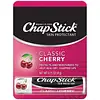What's inside
What's inside
 Key Ingredients
Key Ingredients

No key ingredients
 Benefits
Benefits

No benefits
 Concerns
Concerns

 Ingredients Side-by-side
Ingredients Side-by-side

Butyl Methoxydibenzoylmethane 3%
UV AbsorberHomosalate 10%
Skin ConditioningEthylhexyl Salicylate 5%
UV AbsorberOctocrylene 8%
UV AbsorberAloe Barbadensis Leaf Extract
EmollientArgania Spinosa Kernel Oil
EmollientBisabolol
MaskingCamellia Sinensis Leaf Extract
AntimicrobialCaprylic/Capric Triglyceride
MaskingCalendula Officinalis Flower Extract
MaskingCetyl Alcohol
EmollientCitrus Grandis Fruit Extract
AstringentCitrus Limon Peel Extract
EmollientCucumis Sativus Fruit Extract
EmollientDiisobutyl Adipate
EmollientEquisetum Arvense Extract
AstringentEthylhexyl Palmitate
EmollientParfum
MaskingGinkgo Biloba Leaf Extract
Skin ConditioningHydrogenated Ethylhexyl Olivate
EmollientHydrogenated Olive Oil Unsaponifiables
EmollientIsostearyl Linoleate
EmollientMacrocystis Pyrifera Extract
Skin ConditioningParaffinum Liquidum
EmollientOzokerite
Emulsion StabilisingPanax Ginseng Root Extract
EmollientPEG-8
HumectantPolysorbate 80
EmulsifyingPropylene Glycol
HumectantPunica Granatum Extract
AstringentRosmarinus Officinalis Extract
AntimicrobialSaccharin
MaskingSalix Alba Bark Extract
AstringentSalvia Officinalis Extract
AntimicrobialSilica
AbrasiveTheobroma Cacao Seed Butter
EmollientTocopheryl Acetate
AntioxidantTocopheryl Linoleate/Oleate
AntioxidantWater
Skin ConditioningButyl Methoxydibenzoylmethane 3%, Homosalate 10%, Ethylhexyl Salicylate 5%, Octocrylene 8%, Aloe Barbadensis Leaf Extract, Argania Spinosa Kernel Oil, Bisabolol, Camellia Sinensis Leaf Extract, Caprylic/Capric Triglyceride, Calendula Officinalis Flower Extract, Cetyl Alcohol, Citrus Grandis Fruit Extract, Citrus Limon Peel Extract, Cucumis Sativus Fruit Extract, Diisobutyl Adipate, Equisetum Arvense Extract, Ethylhexyl Palmitate, Parfum, Ginkgo Biloba Leaf Extract, Hydrogenated Ethylhexyl Olivate, Hydrogenated Olive Oil Unsaponifiables, Isostearyl Linoleate, Macrocystis Pyrifera Extract, Paraffinum Liquidum, Ozokerite, Panax Ginseng Root Extract, PEG-8, Polysorbate 80, Propylene Glycol, Punica Granatum Extract, Rosmarinus Officinalis Extract, Saccharin, Salix Alba Bark Extract, Salvia Officinalis Extract, Silica, Theobroma Cacao Seed Butter, Tocopheryl Acetate, Tocopheryl Linoleate/Oleate, Water
Petrolatum
EmollientArachidyl Propionate
EmollientCamphor
MaskingCopernicia Cerifera Wax
Cetyl Alcohol
EmollientParfum
MaskingIsopropyl Lanolate
EmollientIsopropyl Myristate
EmollientLanolin
EmollientCitrus Limon Peel Oil
MaskingParaffinum Liquidum
EmollientMaltol
MaskingOctyldodecanol
EmollientParaffin
PerfumingPhenyl Trimethicone
Skin ConditioningCI 15850
Cosmetic ColorantSaccharin
MaskingPalau White Clay
Humectant
 Reviews
Reviews

Ingredients Explained
These ingredients are found in both products.
Ingredients higher up in an ingredient list are typically present in a larger amount.
Cetyl Alcohol is a fatty alcohol. Fatty Alcohols are most often used as an emollient or to thicken a product.
Its main roles are:
Though it has "alcohol" in the name, it is not related to denatured alcohol or ethyl alcohol.
The FDA allows products labeled "alcohol-free" to have fatty alcohols.
Learn more about Cetyl AlcoholParaffinum Liquidum is also known as liquid paraffin. It is a type of highly refined mineral oil.
Like other oils, Paraffinum Liquidum has emollient properties. Emollients help soothe and soften the skin. By creating a barrier to trap moisture within, emollients help keep your skin hydrated.
Paraffinum Liquidum does not irritate the skin and is non-comedogenic.
Learn more about Paraffinum LiquidumParfum is a catch-all term for an ingredient or more that is used to give a scent to products.
Also called "fragrance", this ingredient can be a blend of hundreds of chemicals or plant oils. This means every product with "fragrance" or "parfum" in the ingredients list is a different mixture.
For instance, Habanolide is a proprietary trade name for a specific aroma chemical. When used as a fragrance ingredient in cosmetics, most aroma chemicals fall under the broad labeling category of “FRAGRANCE” or “PARFUM” according to EU and US regulations.
The term 'parfum' or 'fragrance' is not regulated in many countries. In many cases, it is up to the brand to define this term.
For instance, many brands choose to label themselves as "fragrance-free" because they are not using synthetic fragrances. However, their products may still contain ingredients such as essential oils that are considered a fragrance by INCI standards.
One example is Calendula flower extract. Calendula is an essential oil that still imparts a scent or 'fragrance'.
Depending on the blend, the ingredients in the mixture can cause allergies and sensitivities on the skin. Some ingredients that are known EU allergens include linalool and citronellol.
Parfum can also be used to mask or cover an unpleasant scent.
The bottom line is: not all fragrances/parfum/ingredients are created equally. If you are worried about fragrances, we recommend taking a closer look at an ingredient. And of course, we always recommend speaking with a professional.
Learn more about ParfumWe don't have a description for Saccharin yet.